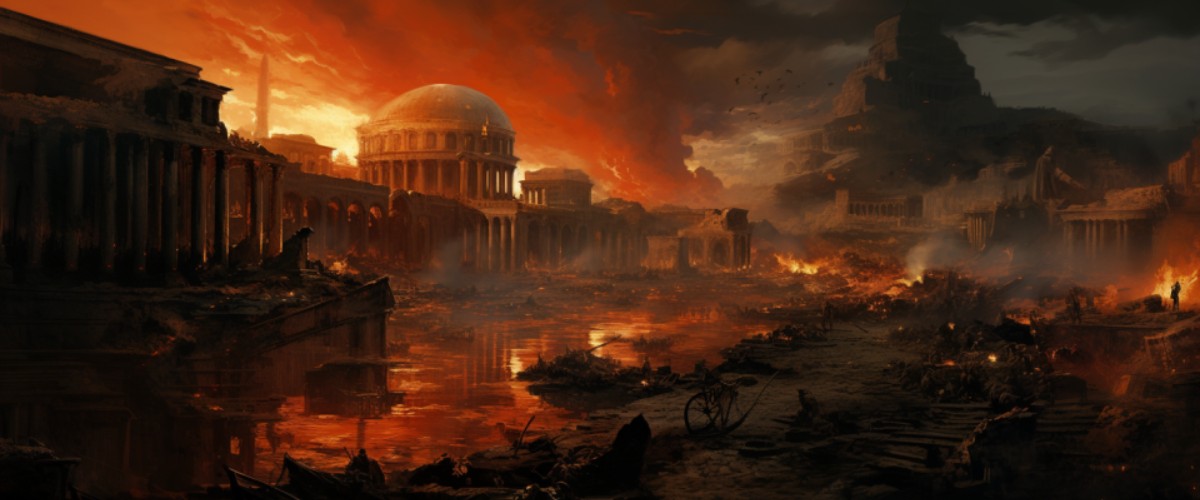The Fall of the Western Roman Empire in 476 AD, a pivotal moment in world history, symbolises a profound metamorphosis from antiquity to the medieval era, reshaping the geopolitical and cultural landscapes of Europe and the Mediterranean. This collapse didn’t merely signify the end of a political entity but triggered a cascade of events, altering societies, politics, and cultures far beyond its borders.
Background
Root Causes and Underlying Factors
- Economic Decline: Mounting debts, hyperinflation, and heavy taxation burdened the empire.
- Military Challenges: Continuous pressures from external tribes and internal discord weakened the military structure.
- Societal and Political Instability: Corruption, administrative inefficiency, and social unrest permeated the Roman society.
- Religious Transformation: The transition to Christianity altered Rome’s cultural and social paradigms.
Key Figures and Entities
- Romulus Augustulus: The last emperor, deposed by the Germanic chieftain Odoacer.
- Odoacer: Leader of the Barbarian tribes, proclaimed himself ruler of Italy post-Rome.
- Flavius Aetius: A general who notably fought against Attila the Hun and Barbarian invasions.
Major Happenings
- Visigoth Sack of Rome (410 AD): Alaric and his Visigoths breached Rome, marking a significant precursor to its fall.
- Vandals Sack of Rome (455 AD): A second sack further illustrating Rome’s vulnerability.
- Deposition of Romulus Augustulus (476 AD): Odoacer ousts the final emperor, ending the Western Roman Empire.
- Establishment of Barbarian Kingdoms: Barbarian tribes established their own realms on Roman soil.
Immediate Outcomes
Societal and Geopolitical Changes
- Rise of Barbarian Kingdoms: Various tribes formed kingdoms, notably the Ostrogoths and Visigoths.
- Fragmentation of Territories: Once-Roman lands dispersed into smaller, feudal entities.
- Culture and Knowledge: A shift towards a decentralised dissemination of cultural and intellectual pursuits.
Primary Consequences
- Power Vacuum: The dissolution of a unified authority paved the way for fragmented and localised powers.
- Decline in Urbanisation: Citizens migrated from cities to rural areas for survival.
Long-term Impact
Reshaping the European Continent
- Feudalism: In absence of a strong central power, a new system of governance and societal structure took root.
- Byzantine Empire: The Eastern Roman Empire endured, preserving Roman and Greek knowledge and culture.
Notable Milestones
- Charlemagne’s Coronation (800 AD): Signified attempts to revive the Roman legacy and the intertwining of the church with the state.
- Renaissance: A revival of Roman and Greek arts, literature, and learning during the 14th century.
Conclusion
Through the prismatic lens of history, the fall of the Western Roman Empire stands out as a monumental pivot, redirecting the course of human civilizations. It begs contemplation, not merely as an historical artefact but as a profound lesson about the vulnerabilities even within seemingly invincible entities. This historic occurrence, through the tapestry of upheavals, creations, and transformations it wove, underscores the impermanence of empires and the inextricable linking threads between stability, governance, and societal wellbeing. Consequently, the echoes of Rome’s demise perpetually reverberate, offering an enduring narrative in our ongoing dialogue with the past.








